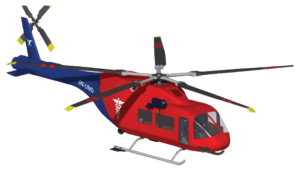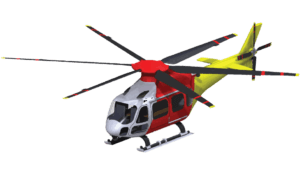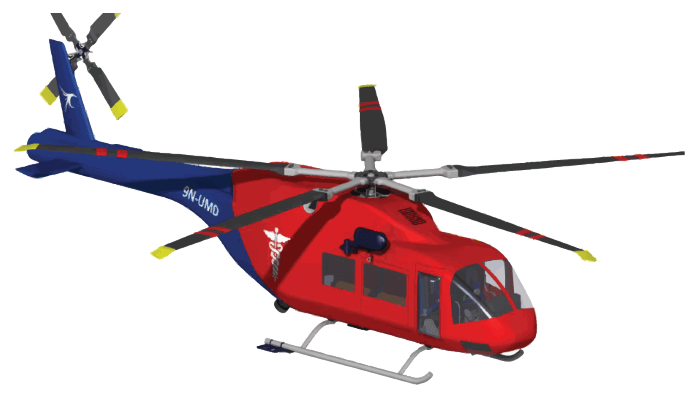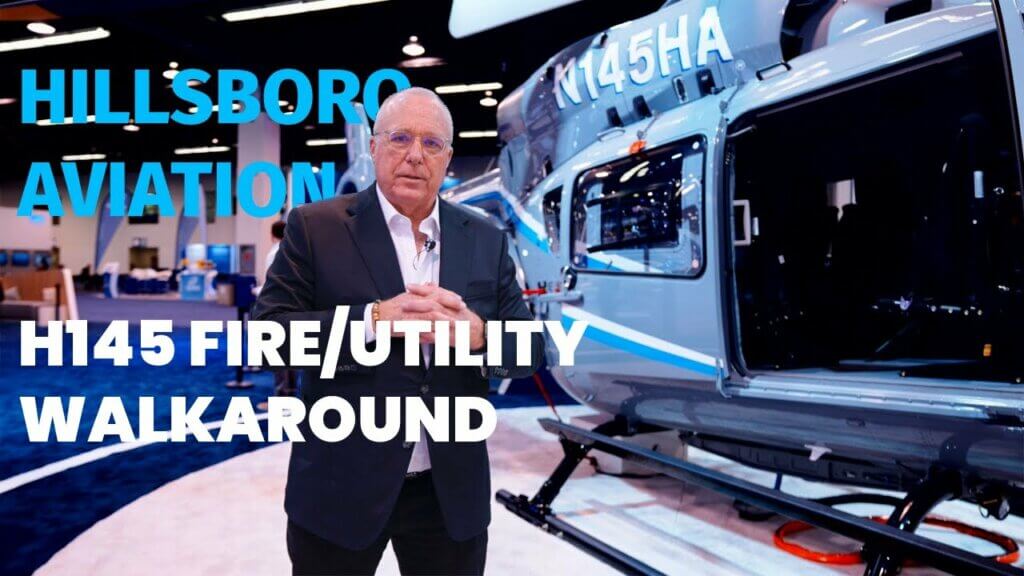The Vertical Flight Society has announced the winners of the 36th Annual Student Design Competition. The University of Maryland took top honors in the graduate category, while the collaborative team from University of Maryland and Universidad de Carlos III took first place in the undergraduate category. Airbus was this year’s sponsor of the competition with a total of $12,500 in prize money. In addition, Altair sponsored an optional bonus weight optimization task with an additional $2,000 in prize money.

Each year, the VFS competition challenges students to design a vertical takeoff and landing (VTOL) aircraft that meets specified requirements, providing a practical exercise for engineering students at colleges and universities to promote student interest in VTOL engineering and technology.
Academic teams from around the world submitted entries in this year’s Student Design Competition, with a total of 18 proposals from six different countries. The top-winning entries from the 36th Student Design Competition are available at www.vtol.org/sdc, along with past winners.
The 2018-2019 Student Design Competition was for an “Extreme Altitude Mountain Rescue Vehicle,” which challenged students to design a rotorcraft to perform emergency medical services up to the highest altitudes in the world. An Airbus H125 (then called the AS350 B3) landed on top of Mount Everest in 2005 at 8,848 meters (29,029 feet) — the highest point on earth — and took off again. But evacuating people during helicopter rescue missions in such extreme altitudes is not possible today and remains an immense challenge, for the rotorcraft as well as for the crew, even in lower altitudes. Freezing temperatures, thin air and hostile weather conditions with degraded visual environment all contribute to making rescue work in high-altitude environments particularly dangerous or impossible. Some 300 people have died trying to summit Mount Everest.
The design competition was for an aircraft that could take off from a standby airport (such as Kathmandu, Nepal) and fly to a refueling point close to the mountain peak (e.g., Syangboche Airport near Everest Base Camp), followed by an ascent and 30 minutes of hovering at the peak for search-and-rescue; the aircraft would then evacuate the rescues to the refueling point and then back to the origin. The whole mission was required to be completed within three hours. Important design aspects included simplicity of design, a low maximum gross weight (MGW), low installed power and a low MGW/payload ratio.
The goal of this year’s VFS Student Design Competition was to answer the questions: What would a rotorcraft look like when specifically designed to perform emergency medical services up to the highest peaks of the planet? What technologies could enable such a vehicle? Could it be used for other purposes as well?
The University of Maryland winning entry in the graduate category was named “Caladrius” after a snow white bird from Roman mythology with healing abilities. The College Park, Maryland, team’s design was a single main rotor helicopter with a large tail rotor designed for low power consumption and high wind speeds, aerodynamically-optimized main rotor blades with deicing to deliver maximum efficiency, a low-drag bearingless hub providing agility during mountain rescues, search-and-rescue equipment effective in harsh weather, and a wide field of view. The Caladrius team also won the optional bonus weight-optimization task portion of the competition.

The collaborative entry, “Tahr,” from the University of Maryland and Universidad de Carlos III of Madrid, Spain, was the winning undergraduate design. The Tahr design is a six-bladed single main rotor helicopter designed to hover at altitudes over 8,870 meters (29,100 feet). Its high forward flight speed and efficiency in hover due to its state-of-the-art twin turboshaft engines make it an effective search-and-rescue vehicle. Tahr, named for the Himalayan wild goat, was also designed to be pilot-friendly to maximize safety. The team also won the optional bonus weight optimization task in the undergraduate category.
Two members of each of the first-place winning teams are invited to the 76th Annual Forum & Technology Display — being held May 19 to 21, 2020, in Montreal, Quebec — to present the details of their designs.
The Annual Student Design Competition sponsorship rotates between Airbus, Leonardo Helicopters, The Boeing Company, Bell, Sikorsky Aircraft and the U.S. Army Research Lab.
The 2019-2020 Request for Proposal (RFP) for the 37th Student Design Competition, sponsored by Leonardo Helicopters, will be made available in early September at www.vtol.org/sdc. This new RFP is called “Leonardo’s Aerial Screw: 500 Years Later.” Student teams will be challenged to design a VTOL vehicle based on Leonardo’s aerial screw concept, studying and demonstrating its physics consistency and its overall feasibility. The actual pros and cons of the aerial screw are often quoted but have not been analyzed extensively, nor has a possible working application been studied, leaving a gap in the technical understanding of the significance of the invention.
In addition, Advanced Rotorcraft Technology, Inc. (ART) is sponsoring a flight simulation optional bonus task with an additional $1,000 each in prize money available for a winning graduate and undergraduate team.
The Vertical Flight Society encourages universities from around the world to form teams and take part in this exciting and challenging competition, which is conducted to attract the best and brightest engineering students to the vertical flight industry.









